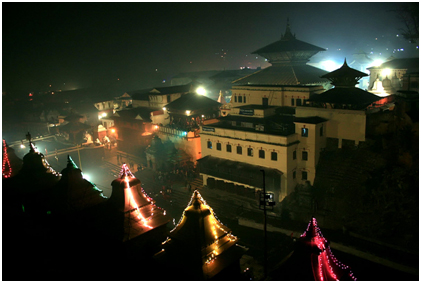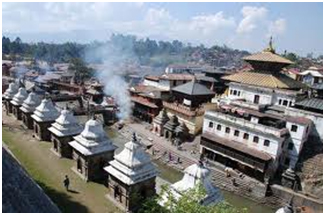- Home |
- Why With Us |
- About Us |
- Booking |
- Contact Us |
- Site Map
- Home
-
Nepal
-
Trekking
- Arun Valley with Gokyo Lakes
- Everest Base Camp Trek
- Everest- A Living Culture Exploration
- Everest Explore
- Everest Base Camp (via Thame) Trek
- Everest Base Camp with Kala Patthar
- Everest Comfort Trek
- Everest High Passes with Ama Dablam Base Camp
- Everest Mani Rimdu Festival Trek
- Everest Nagpa La Trek
- Everest with three high passes
- Gokyo Ri, Chola Pass & Chukung Ri with Kala Patthar
- Gokyo with Everest Base Camp
- Jomsom - Muktinath
- Jomsom - Muktinath
- Khayar Lake Trek
- Manaslu and Tsum Valley with Larkya La
- Upper Mustang Trek
- Manaslu High Circuit
- Manaslu, Tilicho Pass & Upper Mustang
- Annapurna Base Camp Trek
- The Annapurna Circuit Trek
- Annapurna Panorama
- Nar and Phu Valley Trekking
- Nepal Rhododendron Trek
- Royal Trek
- Saribung Trek and Expedition
- Annapurna Sanctuary Trek
- The Annapurna Sunrise Trek
- Expedition
-
Rafting
-
Peak Climbing
-
Tours
- Kathmandu-Chitwan-Jungle Tour with visit to Pokhara
- Dawn to Dusk Tour
- Historical, Natural & Cultural Tour with Camping
- Kathmandu Valley Temple Tour
- Temple - Panorama - Jungle Tour
- Taste of Nepal
- Central Nepal Tour
- Explore Nepal Tour & Trek
- Nepal Cross-country Tour
- Best of Nepal Tour & Treks
- Kathmandu valley rim Tour & Treks
- Nepal Culture Tour
- Introduction to Nepal Tour & Treks
- Nepal at a glance Tour & Treks
- Wonders of Nepal Tour & Treks
- Glimpses of Nepal Tour & Treks
- Through the Silhouette Tour & Treks
- Tent and Temple Tour
- Kathmandu-Chitwan-Pokhara Tour
- Historical, Cultural City and Jungle Tour
- Nepal Wildlife Tour
- Nepal Panorama Historical Tour
- Nepal Adventure Tour
- Nepal Pilgrimage Tour
- Ghalegaun-Ghanapokhara Homestay Tour
- Jungle Safari
- Adventure Sports
-
Trekking
- Tibet
-
Bhutan
-
India
- Yoga Tour
- About Us
-
The Great Himalayan Trail
-
Short Tours/Treks

Pashupatinath
 Situated 5 km east of Kathmandu city center, Pashupati literally means “Lord of Animals” and is considered to be the patron deity of Nepal. Pashupatinath is regarded as one of the holiest sites for Hindus all over the world.
Situated 5 km east of Kathmandu city center, Pashupati literally means “Lord of Animals” and is considered to be the patron deity of Nepal. Pashupatinath is regarded as one of the holiest sites for Hindus all over the world.
Pashupatinath temple is a pagoda style two-tiered golden roof with exquisitely carved four silver doors containing in its sanctum a phallic idol with four faces facing each direction and the other fifth one is looking up towards the zenith. A temple dedicated to Lord Shiva was constructed at the present site by Licchavi King Supushpa Verma according to an ancient chronicle. However, the present temple is claimed to have been built by King Bhupalendra Malla in 1697 A. D. Legends has it that a cow would frequently escape from its herds and offer milk on Jotirlinga (phallic symbol of Lord Shiva) which denotes the point where the temple stands today. It is said that a certain cowherd much to his surprise found the self-generated Jyotirlinga when he dug the spot where the cow would give milk. The spot immediately became the center of worship that has been continued till today.
Legend also mentions that the Pandavas after great Mahabharata battle were told that only by sighting Lord Shiva would they be able to absolve sins and t was at this very sot that they saw the Lord. Hence this most sacred abode of Shiva, who is the God of Gods- Mahadeva-merits a visit by all Hindus, at least once in a lifetime, to be truly blessed and cleansed. It is believed that pilgrimage to the four dhams like Dwarika, Kedar, Rameshwor and Jagnath of India becomes meaningful only after a final darshan of Pashupatinath and by taking a holy dip in the Bagmati River and conducting a proper puja. There are temples of other Hindu deities in Pashupati premises like Bhairavnath, Vasuki nag, Parbati temple, Ram mandir, Vishwo rupa, Gorakhnath, Kireteshwor temple and dozens of temples dedicated to different gods and goddesses.
 A considerable part of the temple vicinity is converted to rest and prayer areas. Behind the temple on the banks of Bagmati is a crematorium for Hindus. It is the wish of every Hindu to be cremated on the bank of the Bagmati River near the temple. AT the other end of the Pashupatinath Temple area is the temple of Guheshwori dedicated to Shiva’s consort Parvati also known as Satidevi. Here is also a deer park at the back of the temple across the Bagmati River. It is also interesting to watch the monkeys roam in and around the temple freely. One may also observe Sadhus smeared with ashes and dressed in lion-cloths and the Hindus Brahmins offering Tika and blessing to the visitors. Pashupatinath attracts thousands of pilgrims on spring festival Maha Shivaratri (Feb-March), the day dedicated to Shiva, Hari Talika / Teej (Aug-Sept), Janai Purnima (July-Aug) and all Mondays of the month of Shraan (July – Aug).
A considerable part of the temple vicinity is converted to rest and prayer areas. Behind the temple on the banks of Bagmati is a crematorium for Hindus. It is the wish of every Hindu to be cremated on the bank of the Bagmati River near the temple. AT the other end of the Pashupatinath Temple area is the temple of Guheshwori dedicated to Shiva’s consort Parvati also known as Satidevi. Here is also a deer park at the back of the temple across the Bagmati River. It is also interesting to watch the monkeys roam in and around the temple freely. One may also observe Sadhus smeared with ashes and dressed in lion-cloths and the Hindus Brahmins offering Tika and blessing to the visitors. Pashupatinath attracts thousands of pilgrims on spring festival Maha Shivaratri (Feb-March), the day dedicated to Shiva, Hari Talika / Teej (Aug-Sept), Janai Purnima (July-Aug) and all Mondays of the month of Shraan (July – Aug).
In October 1979 Pashupati area was declared as the World Heritage Site by UNESCO and the temple is being managed by Pashupati Area Development Trust.

- History
- Overview
- Ancient Nepal
- The Early Kingdom of the Licchavis
- Medieval Nepal, 750-1750
- The Malla Kings
- The Three Kingdoms
- The Making of Modern Nepal
- The Struggle for Power
- The Enclosing of Nepal
- Infighting among Aristocratic Factions
- Rana Rule
- The Ranas
- The Growth of Political Parties
- The Return of the King
- The Democratic Experiment
- The Panchayat System under King Mahendra
- King Birendra
- Movement to restore democracy
- Maoist Insurgency
- Struggle for Democracy
- King's Direct Rule
- People's Movement
- The Constitutional Assembly Election
- Government and Political Conditions
- Geography
- Festivals of Nepal
- Overview
- Bada Dashain (September-October)
- Sri Panchami or Basanta Panchami
- Tihar and Laxmi Puja - festival of lights (Oct-Nov)
- Maghe Sankranti
- Naga Panchami
- Janai Poornima (Rokshya Bandhon)
- Gaijatra
- Pancha Dan
- Teej and Rishi Panchani
- Indrajatra
- Ghanta Karna
- Buddha Jayanti
- Maha Shivaratri
- Phagu Poornima or Holy
- Ghode Jatra
- Chaite Dashain
- Nava Varsha / New Year
- Festival of Seto Machhendranath
- Matatirtha Aunsi or Mother\'s Day
- Bala Chaturdashi
- Sri Krishna Janmastami
- Rama Nawami
- Mani Rimdu festival - Everest Region
- Tiji Festival, Mustang
- Dumje Festival - Everest Region
- Flora and Fauna of Nepal
- Flowering Plants of Nepal
- Getting in to Nepal
- Climate
- Nepal Visa Procedures
- Nepalese Embassies and Consulates Abroad
- Places visit in Nepal
- Orchids of Nepal
- World Heritage Sites of Nepal
Trekking in Nepal
Expeditions In Nepal
Rafting in Nepal
Tours in Nepal
All rights reserved.



